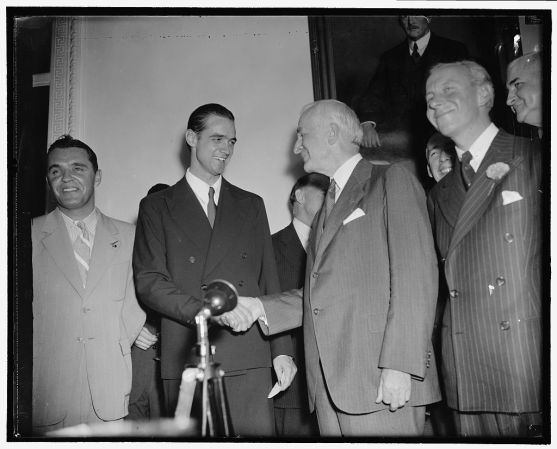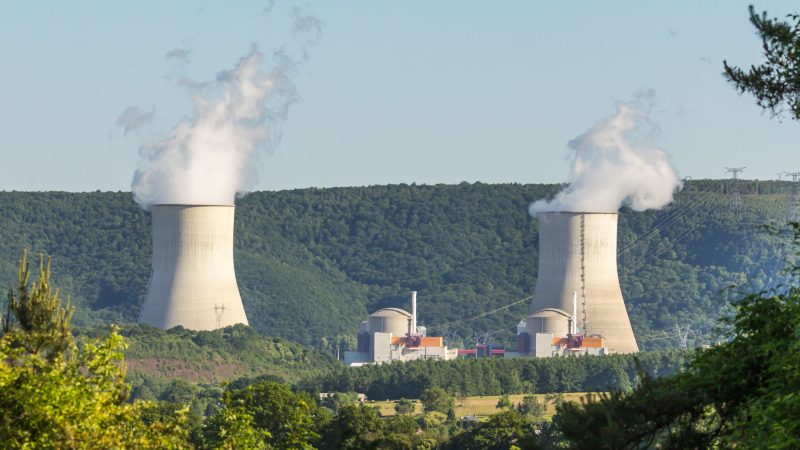Jack ReVelle, an Air Force munitions expert during the Cold War, recently went to a sound booth to record an interview with his daughter where the pair discussed one of the most harrowing moments of Jack’s life: That time he was called to North Carolina to defuse two hydrogen bombs that had plummeted to earth with a combined potential explosive power equivalent to 500 Hiroshima bombs.

A Mark 39 nuclear bomb rests with its nose buried in the mud near Goldsboro, North Carolina, in 1961 after a B-52 broke up in mid-air.
(U.S. Air Force)
In 1961, a B-52 bomber was flying over the great state of North Carolina when it began to break apart. Its entire right wing failed and the plane began falling towards earth. The order was given to abandon the plane, and eight crewmembers attempted to escape. Five survived.
But two other objects joined the crew in the air with parachutes. Two Mark 39 nuclear bombs, one with a successfully deployed parachute and one with a failed chute, fell from the sky. The Air Force sent a team out relatively quietly to find and defuse the nukes. Jack ReVelle told his daughter about getting the mission:
“One night, I get a phone call from my squadron commander. And instead of using all the code words that we had rehearsed, he says, ‘Jack, I got a real one for you.’ You don’t often have two hydrogen bombs falling out of aircraft onto U.S. property.”

Air Force technicians dig through the mud near Goldsboro, North Carolina, in 1961 after a B-52 broke up in mid-air.
(U.S. Air Force)
There was precious little preparation done for such an insane mission, and the airmen found themselves scrambling to get everything they needed to do the mission:
“Ten – we call them the Terrible 10. I knew all of them very well. But nobody was cracking jokes like they usually did. And the first couple of days there, they didn’t even have food for us – nothing. It was snowing. It was raining. It was frozen. That’s why we worked in shifts, sometimes on our hands and knees.”
The first bomb was quickly found hanging from a tree. The parachute had kept its descent reasonable, and it had stuck vertically in the ground, buried only partially in the dirt. The team found that three of its four safeguards had either failed or triggered. Only one safety, the actual safe/arm switch, had prevented a nuclear explosion.

Air Force explosive ordnance disposal technicians remove components of a Mark 39 nuclear bomb from the deep hole that the bomb buried itself in.
(U.S. Air Force)
But the second bomb, the one with an improperly deployed parachute, had hit the ground at 700 mph and plunged 18 feet into the ground. It was Jack and his men’s job to dig in, find as many of the 92 detonators as they could, and recover the warhead.
Most of the detonators were found and recovered, one at a time. But the team got a horrendous surprise when they found the safe/arm switch:
“And as we started digging down, trying to find the second bomb, one of my sergeants says, “hey, Lieutenant, I found the arm safe switch.” And I said, “great.” He says, “no, not great. It’s on arm.” But we all knew what we were there for and the hazards that we were facing. So, we pulled it up out of the mud and brought it up over this wooden rickety ladder that we had, to the surface of the ground, in a safe condition.”
Yeah, the switch had been the only thing that prevented the first bomb from detonating. It had failed on the second bomb. As they recovered the rest of it, they found no safeguards that had properly survived. The bomb should’ve exploded. Engineers wrote in a classified report in 1969 that a single electrical jolt could’ve triggered a weapon. The lead on the study, Parker F. Jones, recommended that Mark 39 bombs no longer be used in an airborne role since they almost gave us Goldsboro Bay.
But Jack and his team were able, through painstaking work, to recover most of the bomb, including the nuclear core. If even one of them had gone off, it could have killed approximately 28,000 people. 60,000 live there today and would, obviously, not be able to live there if the bombs had irradiated the whole area in 1961.
Jack ReVelle’s interview is available on StoryCorps and NPR.
(This article was updated on Feb. 4, 2019. The article originally stated that seven of the eight steps needed to detonate a Mark 39 bomb had been taken and cited a Stanford paper from 2018. But the Stanford paper cites a Guardian article for that claim, and the Guardian article only supports that three of the four major safeguards had failed. This post was changed to reflect this more solid information.)


























